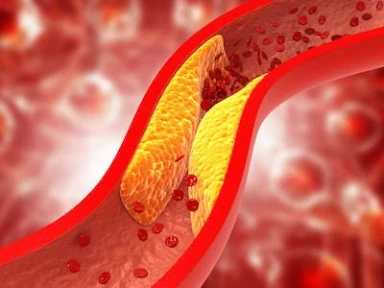LLT and LDLC Over 2 years in CKD and ASCVD From the Gould Registry
LLT utilization and LDL-C levels over 2 years in patients with CKD and ASCVD: Findings from the Gould registry.
As per the Gould registry, overall statin use was high in patients with chronic kidney disease (CKD) with modest increase in the use of high-intensity statin, ezetimibe, and proprotein convertase subtilisin/kexin type 9 inhibitor (PCSK9i) over a 2-year period. Majority of patients did not achieve an atheroprotective low‐density lipoprotein cholesterol (LDL-C) goal indicating key opportunity for improvement of quality of care and outcomes in the CKD population.
Key Takeaway
- The Gould registry is the first study to examine changes in statin use since the 2018 American Heart Association (AHA)/American College of Cardiology (ACC) guidelines were published.
- Statin use was near or above 80% at all estimated glomerular filtration rates (eGFR), but without any significant change in these rates over 2 years
- Overall, lipid lowering therapies (LLT) intensification over 2 years was seen in approximately 20% of patients
- LLT intensification in the PCSK9i cohort was seen in only 12.5% of patients since their LDL‐C levels had more often achieved goal
- This study highlights an opportunity for improvement in quality of care and outcomes in CKD patients considering that majority of patients did not achieve the atheroprotective LDL-C goal of <70mg/dL.
Why This Matters
- Per the 2018 AHA/ACC/Multispecialty cholesterol guidelines, a high‐intensity statin with ezetimibe and/or PCSK9i is recommended for high‐risk atherosclerotic cardiovascular disease (ASCVD) patients with CKD and LDL‐C levels ≥70 mg/dL.
- A meta-analysis of 13 studies of statin therapy has shown to reduce major cardiovascular events in patients with stage 3 and 4 CKD, with no significant benefits for patients with stage 5 CKD and for patients on dialysis
- Overall, more patients with stage 4 and 5 CKD need to be evaluated through lipid lowering studies
- This study evaluated changes in LLT usage and trends in LDL-C levels over 2 years in patients with ASCVD and CKD in the United States
- One of the first studies to examine statin utilization since the publication of the 2018 ACC/AHA guidelines
Study Design
- For details on the Getting to an Improved Understanding of Low-Density Lipoprotein Cholesterol and Dyslipidemia Management (Gould) registry please refer to Gould.
- Patients (N = 5,006) enrolled between 2016 and 2018 were categorized into 3 groups: (1) currently receiving a PCSK9i (n = 554), (2) LDL-C ≥100 mg/dL and not on PCSK9i (n = 1,801), and (3) LDL-C 70–99 mg/dL and not on PCSK9i (n = 2,651)
- Patients were stratified by renal function based on the baseline eGFR data
- Prospective information was obtained by reviewing medical records every 6 months for 2 years.
Key Results
- In total 3,304 patients reported eGFR at baseline, 28.6% (n = 944) had an eGFR <60 ml/min/1.73 m2.
- At 2 years, 2,870 patients had baseline eGFR, of which:
- 2.1% (n = 61) had eGFR <30 ml/min/1.73 m2 (Stage 4–5 CKD) o 25.4% (n = 730) had eGFR 30 to <60 ml/min/1.73 m2 (Stage 3 CKD)
- 56.5% (n = 1,623) had eGFR 60 to <90 ml/min/1.73 m2 (Stage 2 CKD)
- 15.9% (n = 456) had eGFR ≥90 ml/min/1.73 m2
Changes in LLT usage from baseline to 2 years (by eGFR):
- Statin use (any) remained consistent over 2 years while high intensity statin and statin/ezetimibe use showed modest increase over 2 years
| Baseline eGFR (ml / min / 1.73 m2) | ||||||||
| <30 | 30 to <59 | 60 to <90 | ≥90 | |||||
| Baseline (%) | 2 Years (%) | Baseline (%) | 2 Years (%) | Baseline (%) | 2 Years (%) | Baseline (%) | 2 Years (%) | |
| Any statins | 88 | 79 | 83 | 80 | 85 | 83 | 84 | 85 |
| High instensity statin | 40 | 41 | 39 | 44 | 41 | 43 | 43 | 46 |
| Ezetimibe + Statin | 1 | 8 | 3 | 5 | 4 | 7 | 4 | 6 |
Intensification and de-escalation of LLT over 2 years:
- Across cohorts, 19.0% (546/2,870) of patients had LLT intensification, while 9.8% (281/2,870) had de‐escalation of LLT.
- Among the LDL‐C cohorts, 20.1% (496/2,469) had LLT intensification, while 8.3% (205/2,469) had de‐escalation of LLT.
- Intensification of LLT was most frequently seen among LDL‐C ≥100 mg/dL cohort, while less among the PCSK9i cohort
- Rates of statin up-titration increased with deteriorating eGFR in the LDL‐C 70–99 mg/dL cohort
- De‐escalation of LLT was most commonly seen among the PCSK9i cohort and less common among the LDL‐C 70–99 mg/dL cohort
- Rates of statin discontinuation increased with worsening eGFR in the PCSK9i cohort
- Statin down‐titration rates were highest in the LDL‐C 70–99 mg/dL cohort, with individuals having an eGFR <30 ml/min/1.73 m2
For additional details, please refer the source publication Shaik A, et al.
Reference
- Shaik A, Kosiborod M, de Lemos JA, Gao Q, Mues KE, Alam S, et al. Use of lipid‐lowering therapies in patients with chronic kidney disease and atherosclerotic cardiovascular disease: 2‐year results from Getting to an imprOved Understanding of Low‐Density lipoprotein cholesterol and dyslipidemia management (Gould). Clin Cardiol. 2022;45(12):1303–1310. doi: 10.1002/clc.23923. PMID: 36124341.


